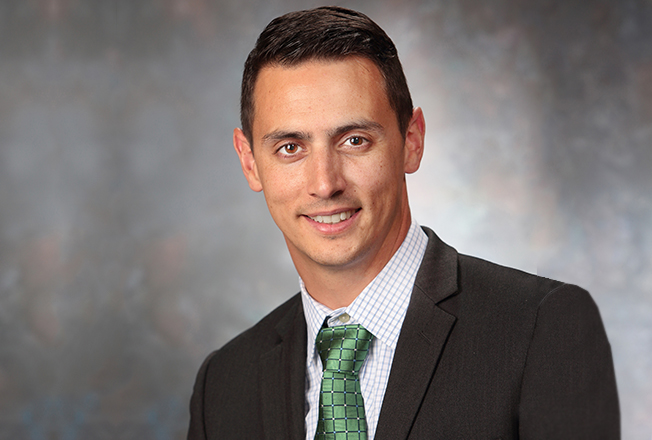
HOLLAND, Mich., July 18, 2023 — July is recognized as UV Safety Awareness Month across the United States where 20% of Americans will develop skin cancer by the age of 70, and more than two people die of skin cancer every hour according to the Skin Cancer Foundation. Holland Hospital aims to combat these numbers by outlining recommendations to stay safe in the sun.

Nathan Salinas, MD, board-certified facial plastic surgeon and otolaryngologist at Holland Hospital Ear, Nose, Throat & Allergy shares the good news that people can greatly reduce the danger posed by UV radiation by taking simple protective measures.
“Every time someone has a sunburn they have an increased risk of cancer,” Dr. Salinas explained. “Five or more sunburns can double the risk of developing melanoma.” Dr. Salinas emphasized that the most important thing people can do to protect themselves and their loved ones is to avoid sunburns. He recommends staying in the shade and wearing sunscreen with a minimum of SPF 30.
Two types of UV light are associated with an increased risk of skin cancer, Ultraviolet A (UVA), which is associated with skin aging, and Ultraviolet B (UVB), which is associated with skin burning. During the summer in West Michigan, both types of UV rays are strongest mid-day between 10 a.m. and 4 p.m.
Though people tend to head to the water to cool off during hot, sunny days, water can add reflective rays that increase the likelihood of burning. Further, the cool water may trick people by temporarily cooling down the skin, making it harder to detect when a burn begins. If headed into water or on a boat, be sure to be diligent about applying sunscreen, he recommends.
“As parents, we need to be faithful about applying and re-applying sunscreen for our kids because they are less likely to think about it,” Dr. Salinas said. “It’s the early protection that makes the biggest difference.” When looking for sunscreen options, Dr. Salinas suggests using products with SPF 30 or higher, especially on the face, and mineral-based products like titanium or zinc, that offer better protection than broad-spectrum options.
Dr. Salinas advises applying sunscreen evenly and fully, following the “fingertip application technique.” The method involves applying two lines of sunscreen directly onto your index and middle fingers first, starting from the base of the fingers to the tips. Using this amount for the face and neck application ensures proper protection by using the correct amount of product. He also urges people to remember the tops of their ears and suggests protecting lips by using a lip balm with SPF.
When considering what signs of skin damage warrant a trip to the doctor’s office, early detection with routine skin examinations can improve survival rates and quality of life. “Think of the ‘ABCDE of skin cancer,’” Dr. Salinas says.
- Asymmetry: the lesion doesn’t match on either side
- Border: the lesion has irregular or uneven borders
- Color: the lesion has a variety of different colors, including dark brown or black
- Diameter: the lesion is larger than 6 mm (pencil eraser size)
- Evolving: the lesion has changed in size, shape, color, or how it’s raised from the skin
For patients over the age of 40, new moles or dark spots should be evaluated. Also, any areas of skin that become irritated and don’t heal on their own within three weeks are worth a doctor taking a look at.
The main takeaway? “When we think about UV safety, the sun feels great and it’s helpful for us by giving vitamin D, but it also carries risk for overexposure,” said Dr. Salinas. “Play outside and have fun but protect yourself and limit the time in the sun.”
To learn more, or to book an appointment with Dr. Salinas, visit hollandhospital.org/fps
FOR IMMEDIATE RELEASE
CONTACT
Jessica Meldrum
jmeldrum@hollandhospital.org
c: (616) 821-0866
July 18, 2023